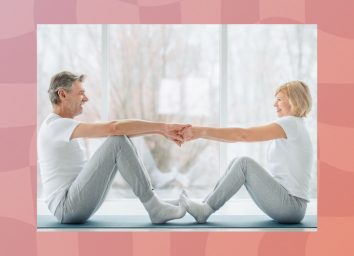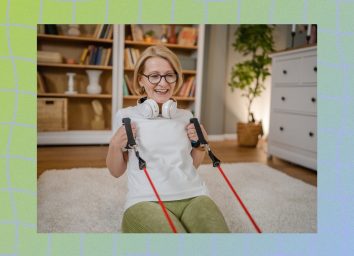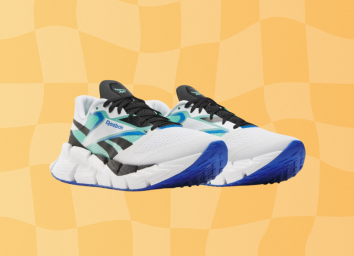Over 50? Here Are 6 Exercise Mistakes You're Too Old To Make
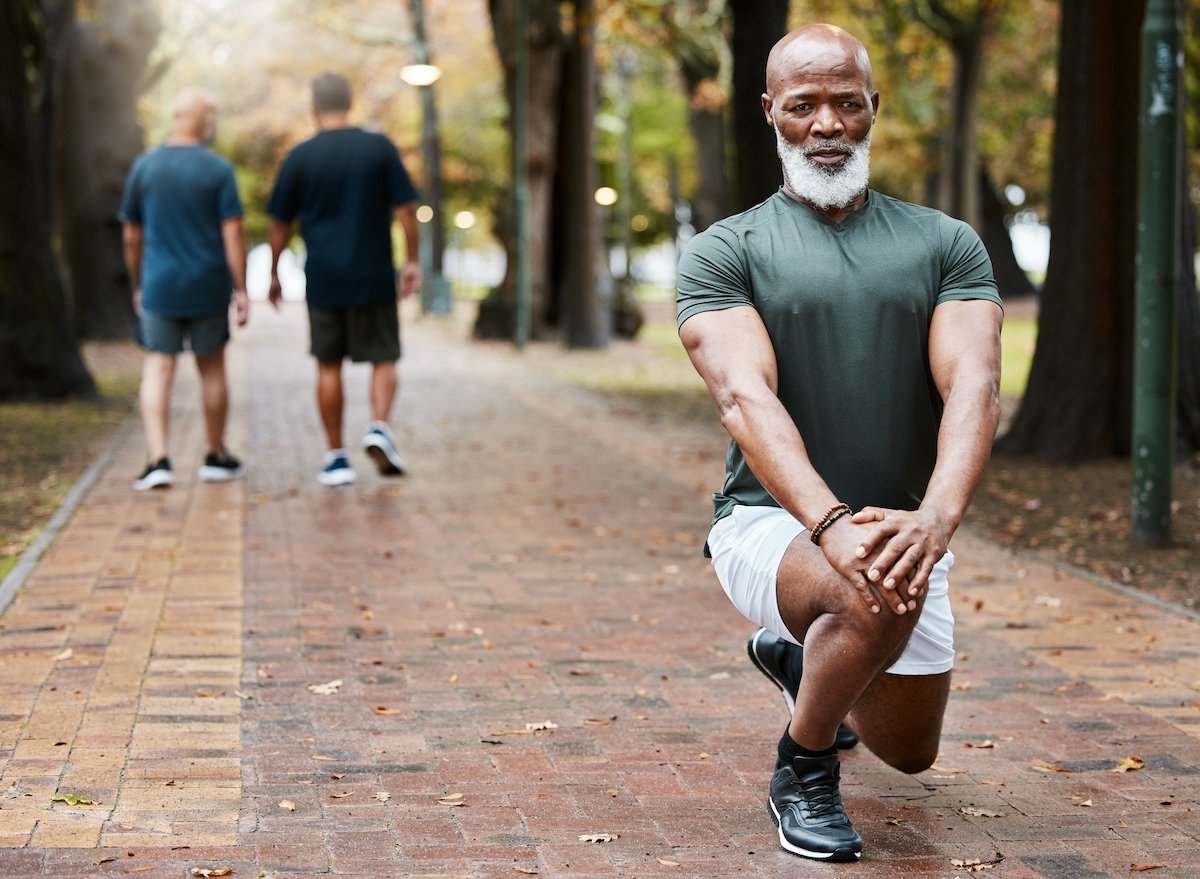
There's no doubt that mistakes are a natural occurrence in life, and hopefully something you can learn from. Of course, there are certain circumstances where you should try to avoid any errors at all costs. That includes when you're working out—especially as you age. We chatted with a fitness professional who shares six exercise mistakes you're too old to make when you're over 50.
Stephen Holt, American Council on Exercise Personal Trainer of the Year and "America's Baby Boomer Fitness Expert," breaks down for Eat This, Not That! why it's so important to avoid the below exercise mistakes. Keep reading to learn more about them, and next up, don't miss The Best Exercises To Regain Balance After 60, Trainer Says.
You're not warming up and cooling down.
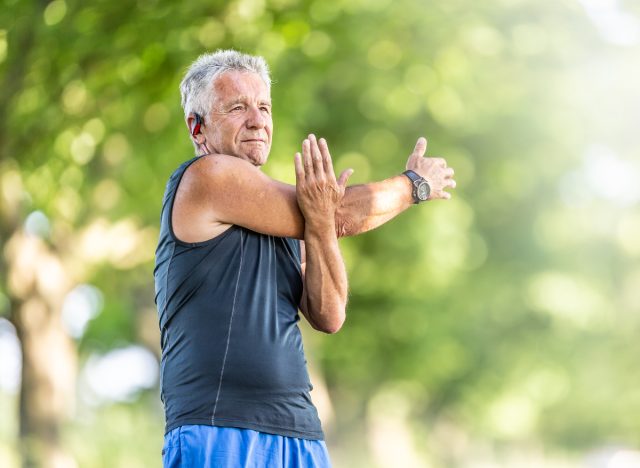
Part of a proper workout means focusing on more than a simple combination of exercises. It's also crucial to have a solid warm-up and cool-down routine on deck. Ignoring the two can be one of the biggest exercise mistakes you don't want to make.
"Warming up and cooling down at the start and end of any exercise session helps to reduce the risk of injury or soreness," Holt explains, adding, "Not cooling down is especially dangerous as we get older since blood is more likely to pool in your legs and can lead to cardiovascular problems."
Prevent these and other potential problems by incorporating a warm-up before you tackle any workout, along with a proper cool-down period when you're finishing up. Holt suggests dedicating at least five minutes each to your warm-up and cool-down.
You're ignoring achy joints.
Feeling sore after engaging in physical activity can be expected—especially if you haven't been particularly active or are trying something new. At the same time, Holt says achy joints can be a telltale sign of injury or arthritis.
"Exercising despite sore joints can prolong or even exacerbate the pain," Holt explains. That's why you need to be extra cautious if your joints are causing any issues. Holt recommends seeking the advice of a healthcare professional or advanced certified personal trainer before kickstarting a workout if you're dealing with any joint problems.
You're ignoring smaller muscles.
According to Holt, generic issues that arise during exercise typically have to do with your larger "mirror muscles," which are the noticeable ones you can see when you look in the mirror. However, he also says that the muscles that usually weaken with age are the ones you may not pay the closest attention to. "Ignoring smaller, stabilizing muscles can lead to injury," Holt explains.
In order to target these minor yet incredibly important muscles that deserve some TLC, Holt suggests, "Search online for more therapy-based versus physique-based exercises that work muscles like your gluteus medius (a hip muscle involved in preventing falls), rotator cuff muscles, mid-back (rhomboids, lower and middle trapezius), and transverse abdominis (your deepest abdominal muscle)."
You're over-exercising.
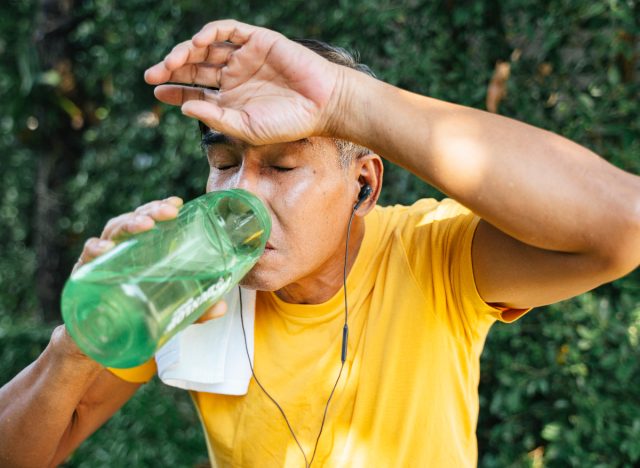
While there's a chance that your fitness goals may not change when you hit 50, the same can't be said of your physical abilities. Over the years, you'll need to adjust to your boundaries. That includes tackling the type and amount of activity that's within your limit and making sure you're not over-exercising. You also need to make sure you're getting enough solid rest in between workouts.
"Recovery after exercise is typically lower as we get older," Holt says. "Trying to follow the same type of routine you did in your youth can lead to undue soreness, delayed progress, and even injury. Listen to your body, and progress at your own pace regardless of what that generic social media workout is telling you." On top of that, he suggests that you shouldn't compare your current self to your younger self.
You're not stretching (when needed).
According to Holt, as you grow older, certain muscles—aka "tonic" muscles—usually get tighter. That's why your calves, hip flexors, and lats may be feeling a lot tighter than they once were. Not stretching them out can create muscle imbalances. For instance, the muscles on one side of a joint can tighten and shorten, while the opposite muscles will weaken and get longer.
"Stretching after exercise is a great way to cool down (see above), may help to reduce muscle soreness, and help you feel better in general since chronically short muscles are under undue tension all the time. However, don't waste your time stretching a muscle that's not actually tight," Holt explains.
You're ignoring balance training.
The last of these exercise mistakes has to do with skipping out on balance training. When you plan your workouts, you may aim to perform exercises that help you stay strong or improve your range of motion. Holt says there's more to keep in mind.
"Many exercisers over 50 stick to machines or simple exercises that don't challenge their balance and coordination whatsoever," he explains, adding, "Incorporating some degree of balance training can help prevent falls by strengthening muscles that often go ignored. You don't have to look like you're practicing for the circus." Instead, completing exercises like one-leg Romanian deadlifts or lunges can be incredibly productive.

